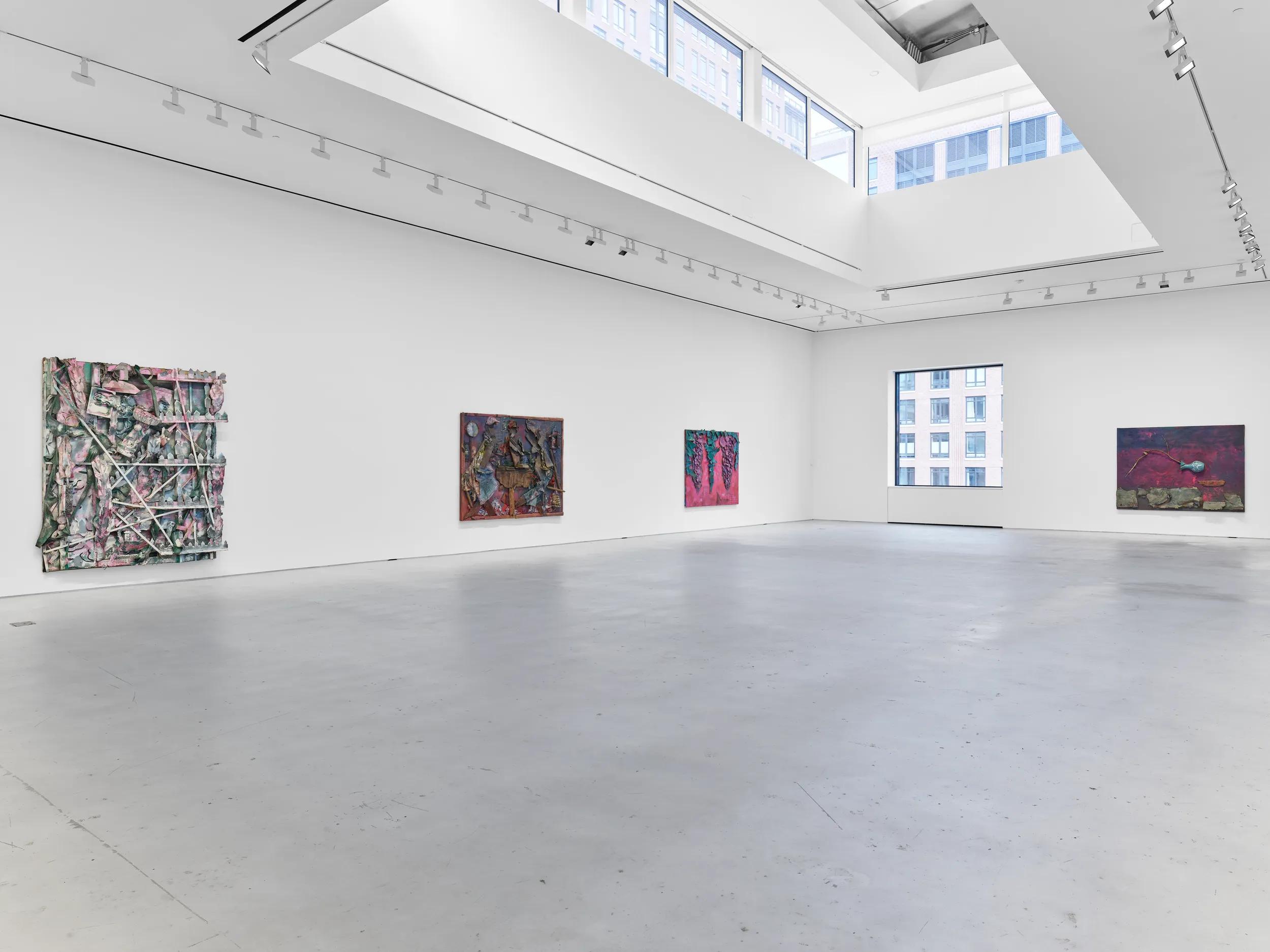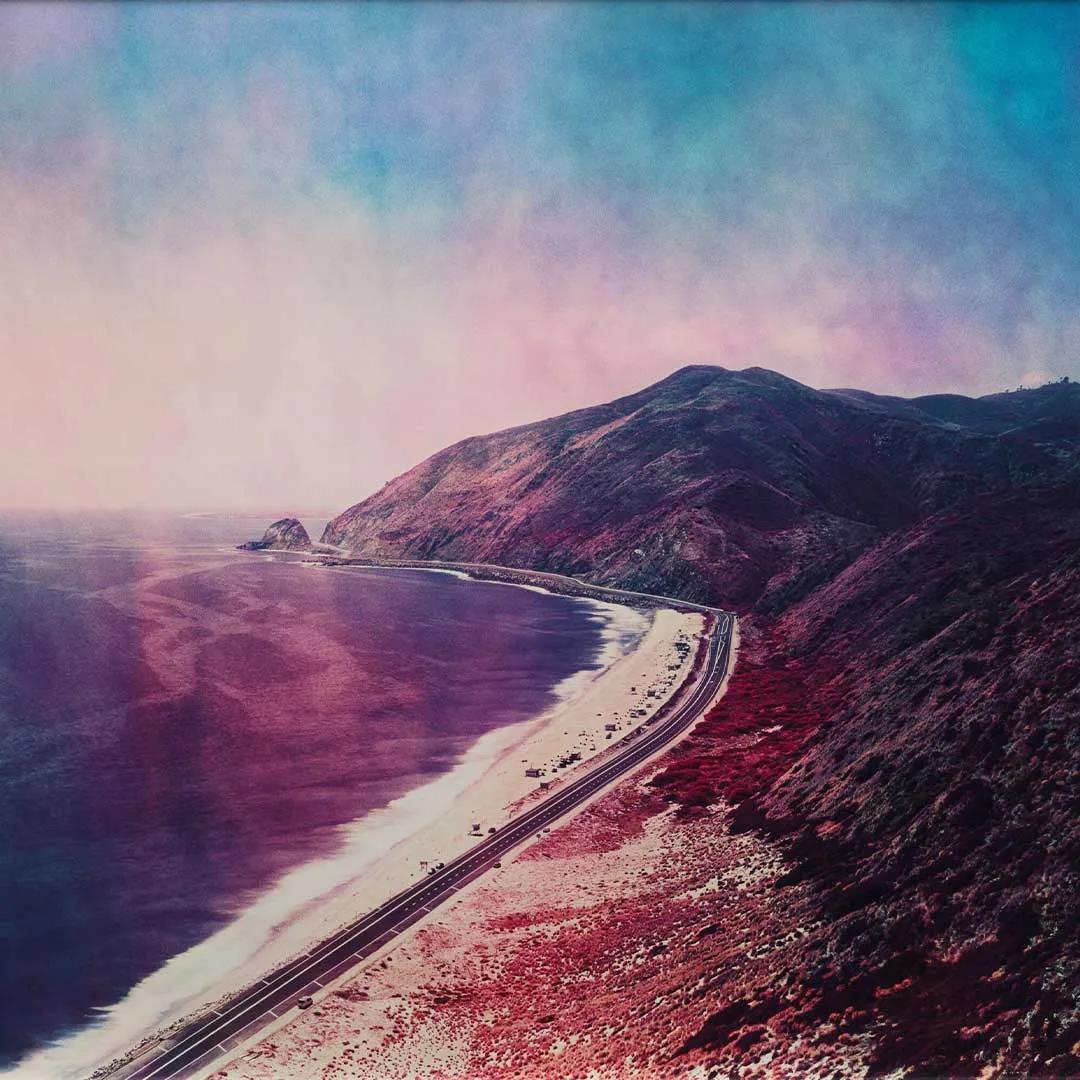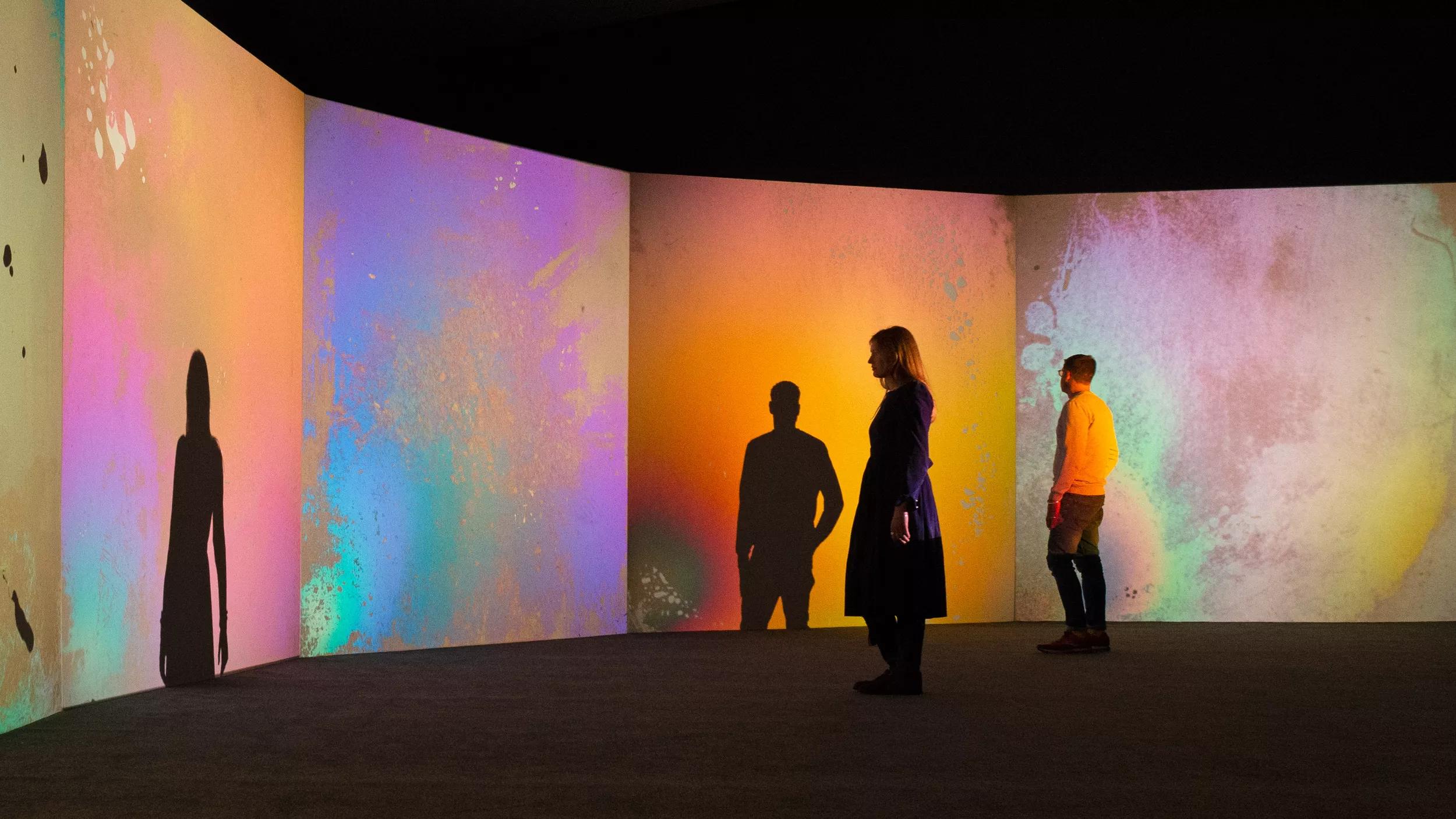
Lucio Fontana
Walking the Space: Spatial Environments, 1948 – 1968
13 February - 13 September 2020
Los Angeles
As a preventative measure based on the latest statewide mandates, the galleries have been closed to the public until further notice. Please visit our website for updates.
Beginning 13 February, ‘Lucio Fontana. Walking the Space: Spatial Environments, 1948 – 1968’ will be the first comprehensive presentation in the US of the late Italian master’s groundbreaking ‘Ambienti spaziali’ (Spatial Environments). Curated by Luca Massimo Barbero in collaboration with the Fondazione Lucio Fontana, Milan, this landmark exhibition will highlight Fontana’s critical contribution to the evolution of conceptual art and the confluence of art with science and technology as a means to explore aspects of human perceptual experience. Fontana, a visionary whose revolutionary practice continues to exert influence upon artists internationally, conceived his first environment in 1948, significantly predating and anticipating the immersive conceptual and spatial achievements of such defining figures as Piero Manzoni, Yayoi Kusama, and James Turrell.
Arranged chronologically and beginning with the artist’s first spatial work, the exhibition will feature nine of Fontana’s environments, dating from the years spanning 1948 to 1968. Due to the rigorous research conducted through the materials of Fondazione Lucio Fontana’s archives, a foundation dedicated to researching and documenting the artist’s career, the exhibition in LA presents meticulous reconstructions of the original Spatial Environments which were historically dismantled and destroyed at the close of exhibition. Together, these ephemeral works reveal the artist’s revolutionary approach to artmaking as a quest to ‘open up space, create a new dimension, tie in the cosmos, as it endlessly expands beyond the confining plane of the picture.’ The most radical, but least well-known area of his oeuvre, the Spatial Environments find Fontana moving beyond the conventions of painting by removing the canvas and using new technology, including neon, to ‘paint’ space with light, putting the viewer at the center of the composition.
‘Walking the Space’ is the first of a trilogy of exhibitions that Hauser & Wirth will present in collaboration with the Fontana Foundation and Luca Massimo Barbero, leading Fontana scholar, Director of the Institute of Art History, Giorgio Cini Foundation, Venice, and Editor of the Fontana works on paper catalogue raisonné and of the Fontana ceramics catalogue raisonné (currently in progress). The Los Angeles exhibition will be followed by an exhibition in New York in Spring 2021, exploring Fontana’s ceramics and sculptures. Subsequently, a major survey of the artist’s full career will be staged at Hauser & Wirth Hong Kong in Fall 2021.
‘Walking the Space’ will be accompanied by a new book published by Hauser & Wirth Publishers, as well as an archival presentation of related ephemera and drawings to provide an educational context for the art on view.
About the Exhibition The exhibition begins with Fontana’s first spatial work, ‘Ambiente spaziale a luce nera’ [Spatial Environment in Black Light] (1949), a pivotal installation that anticipated major conceptual movements, including Light & Space, Op Art, and Minimalism. Conceived in 1948 and first exhibited in 1949, this pitch-black room, illuminated by Wood’s lamps emitting black light, contains sculptural papier-mâché forms painted in brilliant fluorescent colors and suspended from the ceiling. The installation seeks to disorient the viewer, who by walking under and around the forms in the darkness experiences a sense of teetering between the infinite and finite. Influenced by aerospace discoveries of the time and Fontana’s own interest in science, the work’s aesthetic impact is otherworldly and prescient for its conceptual underpinnings. The artwork evades the categorization of ‘object’ by bringing form to the formless and awakening visitors to a multi-sensory art experience. With this first work, Fontana realizes the key tenets outlined in his Manifesto Spaziale [Spatialist Manifesto], a formative postwar text calling for the convergence of art and technology to discover new forms. By abolishing the constraints of conventional mediums, this environment embodies Fontana’s vision outlined in the Manifesto: ‘...with the resources of modern technology, we will make appear in the sky: artificial forms, rainbows of wonder, luminous writings.’
For the Milan Triennale in 1951, Fontana realized the luminous impact of neon beyond its prescribed utilitarian function by creating ‘Struttura al neon per la IX Triennale di Milano’ [Neon Structure for the 9th Milan Triennale], a twisting gesture composed of over 100 meters of white light tubes. Among the first to use neon in an environmental application, Fontana reveals the plastic dynamism of the material, as if writing with light, integrating ideas of space, time, and movement in a single form.
Continuing an in-depth exploration of Fontana’s spatial practice and his interest in architecture, the exhibition next takes visitors through two environments, each entitled ‘Ambiente spaziale: “Utopie”, nella XIII Triennale di Milano’ [Spatial Environment: “Utopias”, at the 13th Milan Triennale], both originally shown at the 13th edition of the Milan Triennale in 1964 and realized in collaboration with architect and artist Nanda Vigo. The first of the two 1964 environments directs visitors through a dark corridor with a curved wall marked with small holes. Enveloped by darkness, viewers are guided ahead by green lights that seem to emanate from the black void. In the second environment ‘Utopie,’ an undulating floor and red deep-pile carpet soften visitors’ steps, while ruby-colored metallic wallpaper covers a ceiling with red neon hidden behind Quadrionda glass, industrial material designed especially for this environment – all contributing to a crimson ambient glow. In each work, Fontana invents new methods to apply concepts of spatialism, freeing himself from the confines of the object in order to continue his search for modern modes of expression and perception. Fontana’s spatial theories, as expressed in this pair of environments attracted immediate attention, influencing the artist group Düsseldorf Zero to present ‘Hommage á Fontana’ at Documenta 3 in Kassel in 1964.
As Fontana further established himself as an innovator in exploring the fourth dimension in art, public institutions invited him to create special commissions of ambient works. His first comprehensive presentation in America took place in 1966 at the Walker Art Center, Minneapolis, Minnesota, where he exhibited ‘Ambiente spaziale’ [Spatial Environment] (1966). This environment contains a sloped, low-ceilinged dark corridor that opens into a larger, level room. Inside this space, small, illuminated holes form a line bisecting the floor, ceiling, and two walls, creating the trace of a square.
In the next three environments, originally constructed for The Stedelijk Museum Amsterdam in 1967, Fontana reinvents elements that recur in his radical spatial works: neon, perforations, slashes, and suspension. In the first of the three installations, ‘Ambiente spaziale’ [Spatial Environment] (1967), Fontana included a curved two- dimensional form suspended in a room filled with fluorescent dots. Through Fontana’s inventive use of black light, two-dimensional silhouettes appear to be defying gravity and take on three-dimensional attributes. In the next environment, visitors find Fontana reinterpreting his luminous sculpture from 1951 in ‘Ambiente spaziale con neon’ [Spatial Environment with Neon Light] (1967), a room lined with pink fabric anchored by an organic wave-like neon tube suspended from the ceiling – a minimalist execution with intense sensory impact. Fontana continued to work with monochromatic environments such as this, in ‘Ambiente spaziale a luce rossa’ [Spatial Environment in Red Light] (1967), where red light engulfs a room whose walls are divided into maze-like parallel corridors.
The exhibition’s final environment, ‘Ambiente spaziale in Documenta 4, a Kassel’ [Spatial Environment at Documenta 4, in Kassel] (1968), was created at the request of art historian Arnold Bode, who instructed Fontana to design a ‘cold and minimalist’ room. Here, visitors encounter a labyrinthine environment composed of narrow corridors that lead to a large laceration embedded within the wall, an allusion to the signature gesture of this daring, radical artist.
Selected images
Installation views























1 / 10
Related Content
Current Exhibitions

Firelei Báez
The Fact That It Amazes Me Does Not Mean I Relinquish It
13 September 2024 – 5 January 2025
Downtown Los Angeles

Thornton Dial - The Visible and the Invisible
2 November 2024 – 11 January 2025
New York, 22nd Street

Firelei Báez
The Fact That It Amazes Me Does Not Mean I Relinquish It
13 September 2024 – 5 January 2025
Downtown Los Angeles

Thornton Dial - The Visible and the Invisible
2 November 2024 – 11 January 2025
New York, 22nd Street
1 / 10





















